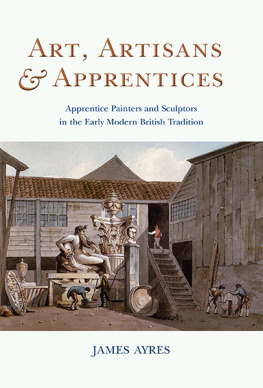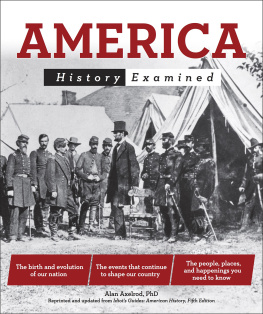Thats Not in My American History Book

| Thats Not in My
American History
Book |
A Compilation of Little-Known Events
and Forgotten Heroes
Thomas Ayres

Copyright 2000 by Thomas Ayres
First paperback edition 2004
This Taylor Trade Publishing paperback edition of Thats Not in My American History Book is an original publication. It is published by arrangement with the author.
All rights reserved. No part of this book may be reproduced in any form or by any electronic or mechanical means, including information storage and retrieval systems, without written permission from the publisher, except by a reviewer who may quote passages in a review.
Designed by Barbara Werden
Published by Taylor Trade Publishing
An imprint of The Rowman & Littlefield Publishing Group, Inc.
4501 Forbes Boulevard, Suite 200, Lanham, Maryland 20706
Distributed by NATIONAL BOOK NETWORK
The hardback edition of this book was previously cataloged by the Library of Congress as follows:
Ayres, Thomas, 1936
Thats not in my American history book: a compilation of little-known events and forgotten heroes / Thomas Ayres.
p. cm.
Includes bibliographical references.
ISBN-13: 978-1-58979-107-7 (pbk. : alk. paper)
ISBN-10: 1-58979-107-X (pbk. : alk. paper)
1. United StatesHistoryAnecdotes. 2. United StatesBiographyAnecdotes. 3. United StatesHistoryErrors, inventions, etc. I. Title.
E178.6 .A96 2000
973dc21
00-042603
 The paper used in this publication meets the minimum requirements of American National Standard for Information SciencesPermanence of Paper for Printed Library Materials, ANSI/NISO Z39.48-1992.
The paper used in this publication meets the minimum requirements of American National Standard for Information SciencesPermanence of Paper for Printed Library Materials, ANSI/NISO Z39.48-1992.
Manufactured in the United States of America.
To Isabel
Contents
Acknowledgments
 At a small country school nestled in a pine grove in the North Louisiana sand hills, a teacher named Mrs. Dees kept a disruptive eight-year-old after class one afternoon. Instead of having me dust erasers and clean the blackboard (punishments at which I had become adept with practice) she did something different that day. Ordering me to be seated, she opened a book and began to read to me. A half-hour later, she closed the covers and announced that I was free to go. I sat there, spellbound, lost in the story. I had to have that book and find out what happened to those people. The book was Westward the Wagons. It introduced me to a world of adventure filled with fascinating people from the past. From that day, I have not lost my fascination for the past and I have been a reader of books. Thank you, Mrs. Dees, for hooking me on reading.
At a small country school nestled in a pine grove in the North Louisiana sand hills, a teacher named Mrs. Dees kept a disruptive eight-year-old after class one afternoon. Instead of having me dust erasers and clean the blackboard (punishments at which I had become adept with practice) she did something different that day. Ordering me to be seated, she opened a book and began to read to me. A half-hour later, she closed the covers and announced that I was free to go. I sat there, spellbound, lost in the story. I had to have that book and find out what happened to those people. The book was Westward the Wagons. It introduced me to a world of adventure filled with fascinating people from the past. From that day, I have not lost my fascination for the past and I have been a reader of books. Thank you, Mrs. Dees, for hooking me on reading.
While expressing gratitude, I must thank my literary agent, Jim Donovan, for his guidance and advice, as well as my old newspaper colleague and longtime friend, Bill Sloan, who encouraged me to send my manuscript to Donovan. To the editors at Taylor Publishing Company, especially Michael Emmerich and Fred Francis, I can only say thanks for your patience, and expert guidance, in bringing the seed of an idea to fruition.
Many contributed to the stories contained herein. Archaeology Professor Jon Gibson of the University of Louisiana at Lafayette, the foremost expert on native mound-building cultures in the lower Mississippi River Valley, has an ability to bring ancient cultures to life in a way even a layman such as myself can understand. Thanks are due the staff at the Russell Library at Middletown, Connecticut, for locating rare volumes detailing the flights of Gustave Whitehead; to Nina Johnson, at the Camp County Museum in Pittsburg, Texas; and Scott Thompson at the Louisiana State Archives in Baton Rouge. There are others, far too numerous to mention. To all, I offer my gratitude.
Special thanks are due Travis Ayres, my brother and foot soldier, who helped with the research; Jerry and Benola Robinson and Sandy Bouy, who pried me away from my aging typewriter and introduced me to the wonders of Bill Gatess software; T. J. Hurst, for her help with the photographs and illustrations; and my wife Bea, whowith all due respect to Mr. Emmerich and Mr. Francisis my ultimate editor in chief.
Finally, I want to thank those maverick historians who have stretched the boundaries of history by refusing to accept its mythsRichard Shenkman, Kenneth C. Davis, Irving and Amy Wallace, David Wallechinsky, J. P. Chaplin, James W. Loewen, Paul Kuttner, William ODwyer, Stella Randolph, and my old friend, Doug Storer, to mention only a few. You are my heroes.
THOMAS AYRES
Introduction
 Dad? Have you read about the Battle of Midway?
Dad? Have you read about the Battle of Midway?
Sure.
That was really something, huh? I mean how the whole course of the war was changed in only five minutes.
A warm feeling of pride swelled in my chest. I wanted to high-five the kid. My son, a college sophomore, had discovered World War II. His interest was not ignited in a classroom. The spark came from a video game. A desire to excel at the game had sent him to the library to research the battle. Fascinated, he began reading about other engagements and developed an interest in World War II aircraft. Finally, he got around to actually learning some of the reasons for the conflict.
It always disturbed me that my children did not share my enthusiasm for history. Occasionally, I would find one of their school texts lying around the house, thumb through its pages, and ask a question I considered common knowledge. Inevitably, I was shocked by their inability to answer and, worse still, by their seeming disinterest.
The sad truth is that todays students learn very little history. They shuffle through the pages with dull detachment because that is how most history texts are written. They sit through lectures on dates, events, and places as distant to them as the furthermost quasar, then guess at answers on multiple-choice tests. Is it any wonder we live in a time when a high school senior can pick up a diploma without knowing in which century the War of 1812 took place, much less the significance of Midway, Saratoga, Watergate, or Elizabeth Cady Stantons suffrage convention?
History is not dates, places, and events to be memorized by school children. It is people influencing eventsreal people with blood coursing through their veins and thoughts through their minds. History breathes. Its heart beats. Just like those who make it, history changes and remains the same. It repeats its triumphs and tragedies. History is little people caught up in great events and great people turning insignificant events into momentous ones. History is madman and genius, warmonger, peacemaker, idealist, and cynicactors all, playing out their roles on the greatest stage of all.
Next page










 The paper used in this publication meets the minimum requirements of American National Standard for Information SciencesPermanence of Paper for Printed Library Materials, ANSI/NISO Z39.48-1992.
The paper used in this publication meets the minimum requirements of American National Standard for Information SciencesPermanence of Paper for Printed Library Materials, ANSI/NISO Z39.48-1992. At a small country school nestled in a pine grove in the North Louisiana sand hills, a teacher named Mrs. Dees kept a disruptive eight-year-old after class one afternoon. Instead of having me dust erasers and clean the blackboard (punishments at which I had become adept with practice) she did something different that day. Ordering me to be seated, she opened a book and began to read to me. A half-hour later, she closed the covers and announced that I was free to go. I sat there, spellbound, lost in the story. I had to have that book and find out what happened to those people. The book was Westward the Wagons. It introduced me to a world of adventure filled with fascinating people from the past. From that day, I have not lost my fascination for the past and I have been a reader of books. Thank you, Mrs. Dees, for hooking me on reading.
At a small country school nestled in a pine grove in the North Louisiana sand hills, a teacher named Mrs. Dees kept a disruptive eight-year-old after class one afternoon. Instead of having me dust erasers and clean the blackboard (punishments at which I had become adept with practice) she did something different that day. Ordering me to be seated, she opened a book and began to read to me. A half-hour later, she closed the covers and announced that I was free to go. I sat there, spellbound, lost in the story. I had to have that book and find out what happened to those people. The book was Westward the Wagons. It introduced me to a world of adventure filled with fascinating people from the past. From that day, I have not lost my fascination for the past and I have been a reader of books. Thank you, Mrs. Dees, for hooking me on reading. Dad? Have you read about the Battle of Midway?
Dad? Have you read about the Battle of Midway?